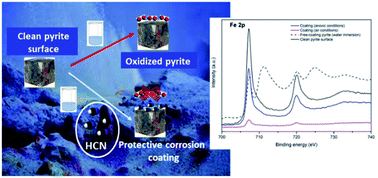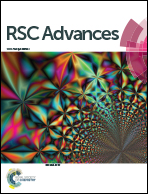An XPS study of HCN-derived films on pyrite surfaces: a prebiotic chemistry standpoint towards the development of protective coatings
Abstract
Traditionally, the effect of mineral surfaces on increasing molecular complexity has been considered a major issue in studies about the origin of life. In contrast, herein, the effects of organic films derived from cyanide over an important prebiotic mineral, pyrite, are considered. An XPS spectroscopy study was carried out to understand the surface chemistry of the HCN-derived polymer/pyrite system. As a result, the simulation of a plausible prebiotic alkaline hydrothermal environment led to the identification of an NH4CN-based film with protective corrosion properties that immediately prevented the oxidation of the highly reactive pyrite surface. In addition, the effect of coating with antioxidant properties was preserved over a relatively long time, and the polymeric film was very stable under ambient conditions. These results increase the great potential of HCN polymers for development as a cheap and easily produced new class of multifunctional polymeric materials that also show promising and attractive insights into prebiotic chemistry.



 Please wait while we load your content...
Please wait while we load your content...